Most of my[1] research and publication has been in the field of sociology, but in 2009 I fell in love with old optical devices. To me they revealed a lot about the history of the science of perception, art and philosophy. Rare, expensive, and hidden away in museum collections in Europe, they were difficult for me to study. So, in 2017 I started to build replicas of them – sometimes reviving devices that have not been seen for over 100 years. This is a record of that work and my growing dedication to beauty in design and craftsmanship in execution.
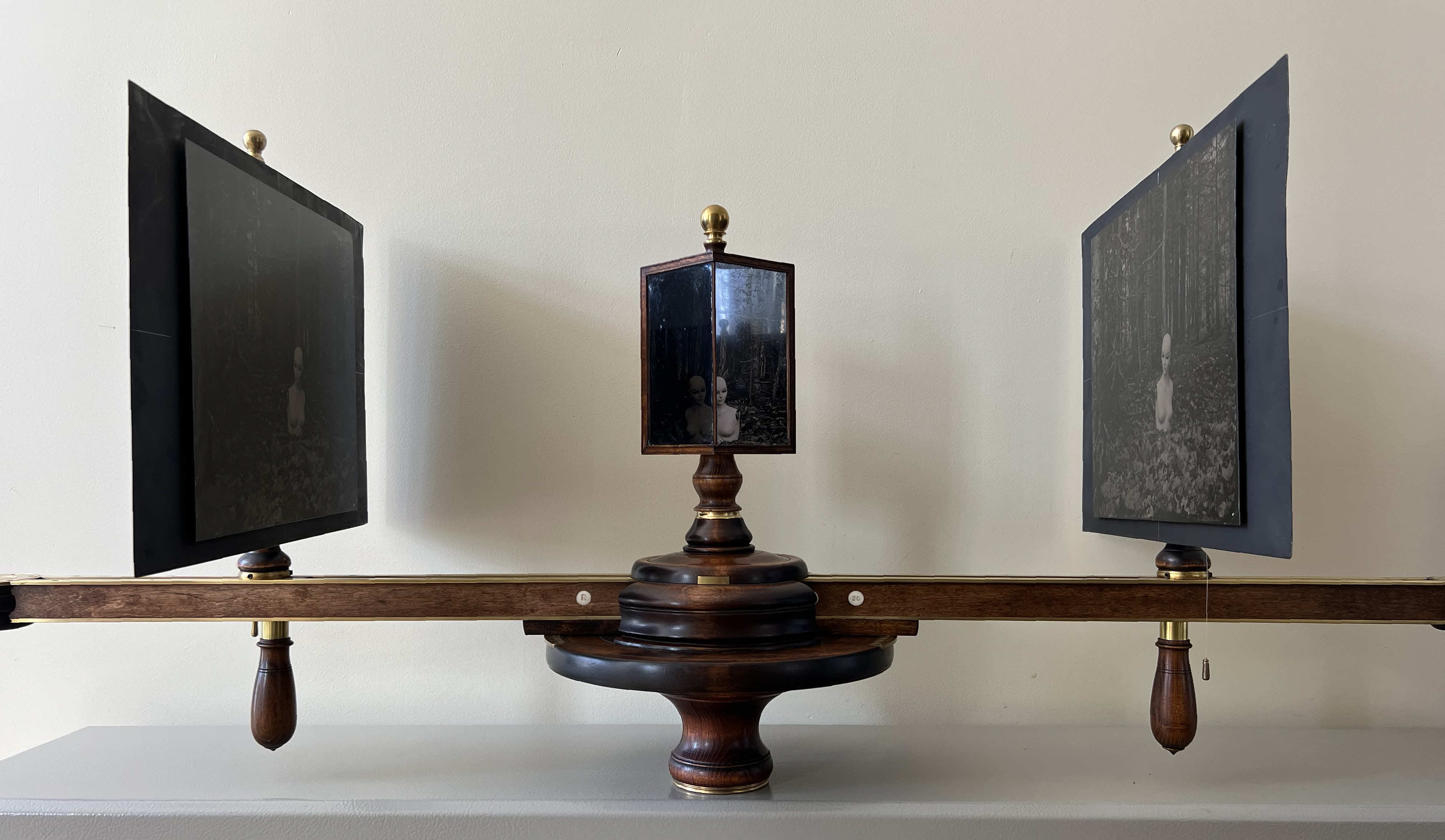
This is Charles Wheatstone’s experimental stereoscope re-imagined on the model of an orrery. The viewer looks into the mirrors at the reflected stereoscopic images. The arms pivot to change the angle of convergence of the eyes, and the image-plates can be brought closer or further in synchronized motion to change the size of the retinal impressions.
In this image, the stereoscope is mounted with stereoscopic tintypes (28 x 36 cm) made specially for it by the artist Karen Stentaford.
The observer's position is not constrained, so you can move side-to-side to get a motion parallax effect that enhances the 3D illusion. That is not possible with the more common lenticular stereoscope.
I built this viewer using first-surface mirrors, maple wood, locally-harvested yellow birch and black locust with hand-turned brass finials and accents.
Exhibitions:
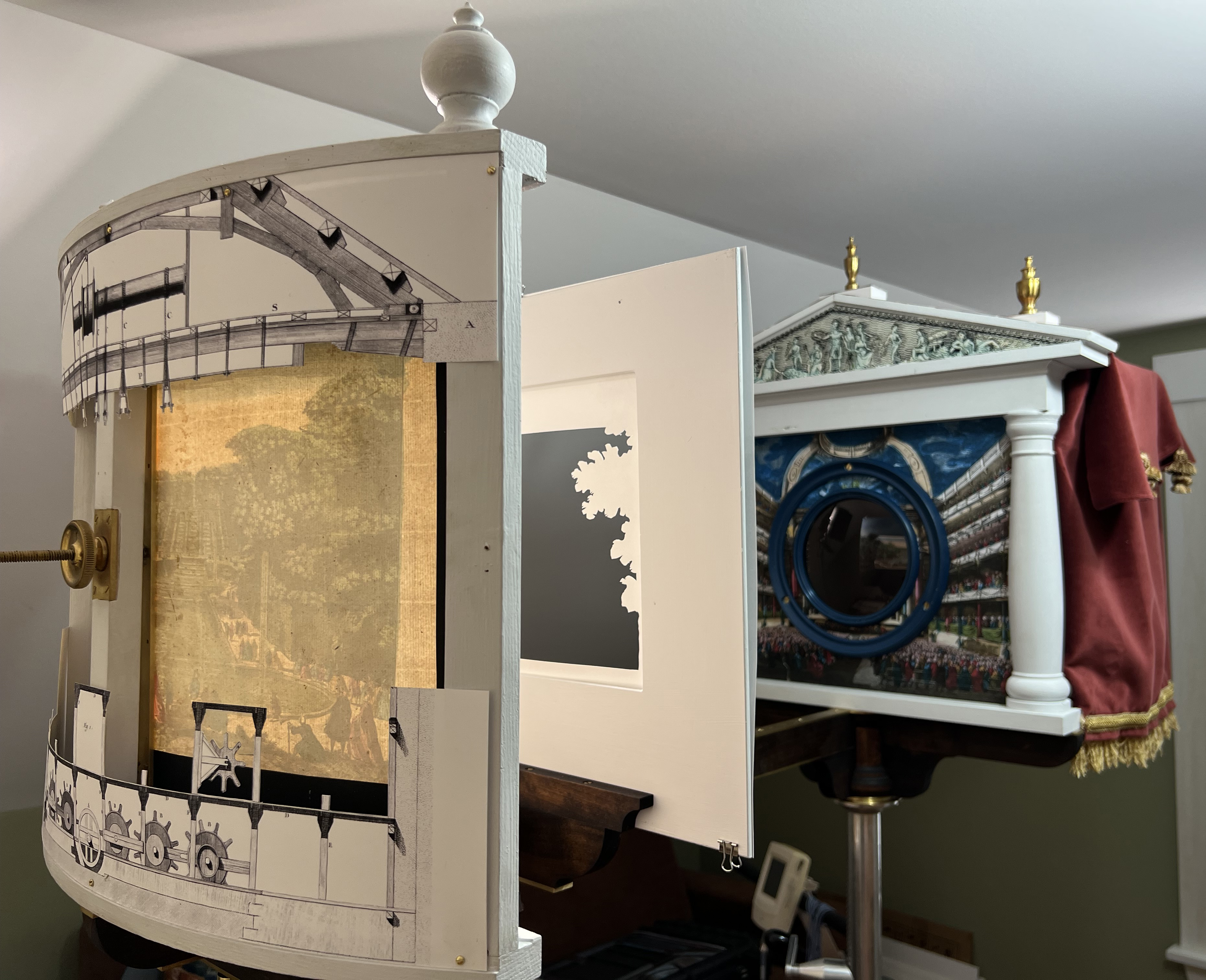
This miniature theatre is based on the touring optical boxes of the 18th century. It brought a 3D, immersive experience of distant places to markets and fairs throughout Europe. I have made various components of the design variable to study how it works. The viewer enters the curtained area and looks towards us through the lens. She sees through a coulisse to an image on the image-plate. We see the image-plate from behind. The image-plate is curved to enhance the illusion of depth, and that curvature can be adjusted. It can also be back illuminated to create various mood and atmospheric effects.
Exhibitions:
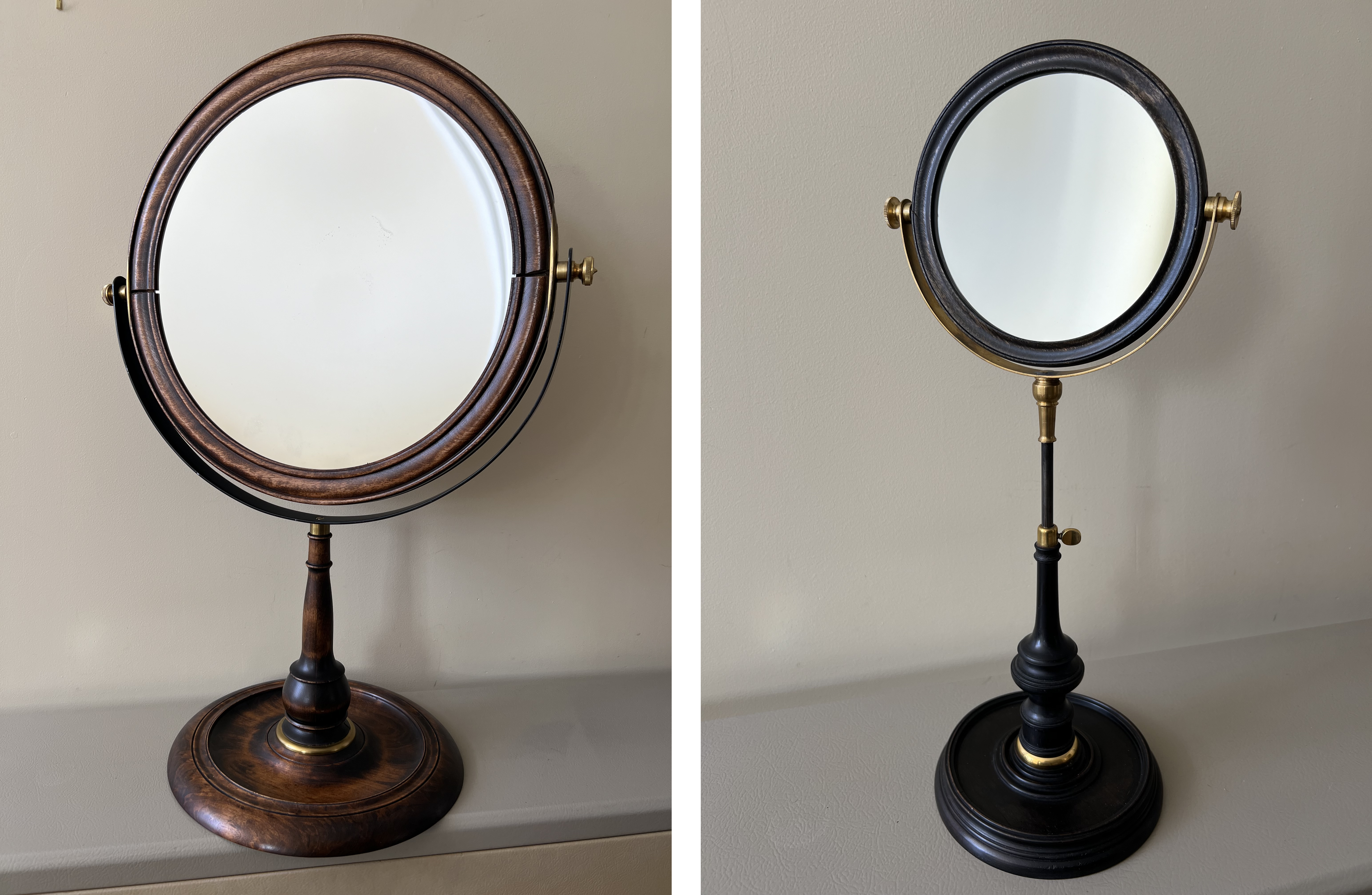
Mirrors like these were commonly used as scientific instruments in the eighteenth and nineteenth-centuries. Concave mirrors were also used to enhance the 3D effect in optical boxes, and in 3D “images in the air” such as the Kantian mirror projection. I built these two to study the principles involved. The larger is 44 cm in diameter; the smaller is 15 cm in diameter.
Every component except the glass is made by hand from raw materials: brass, steel, apple wood from my orchard, yellow birch from Charlie Teasdale's mill.
They can be mounted on an "optical bench" for experimental purposes:
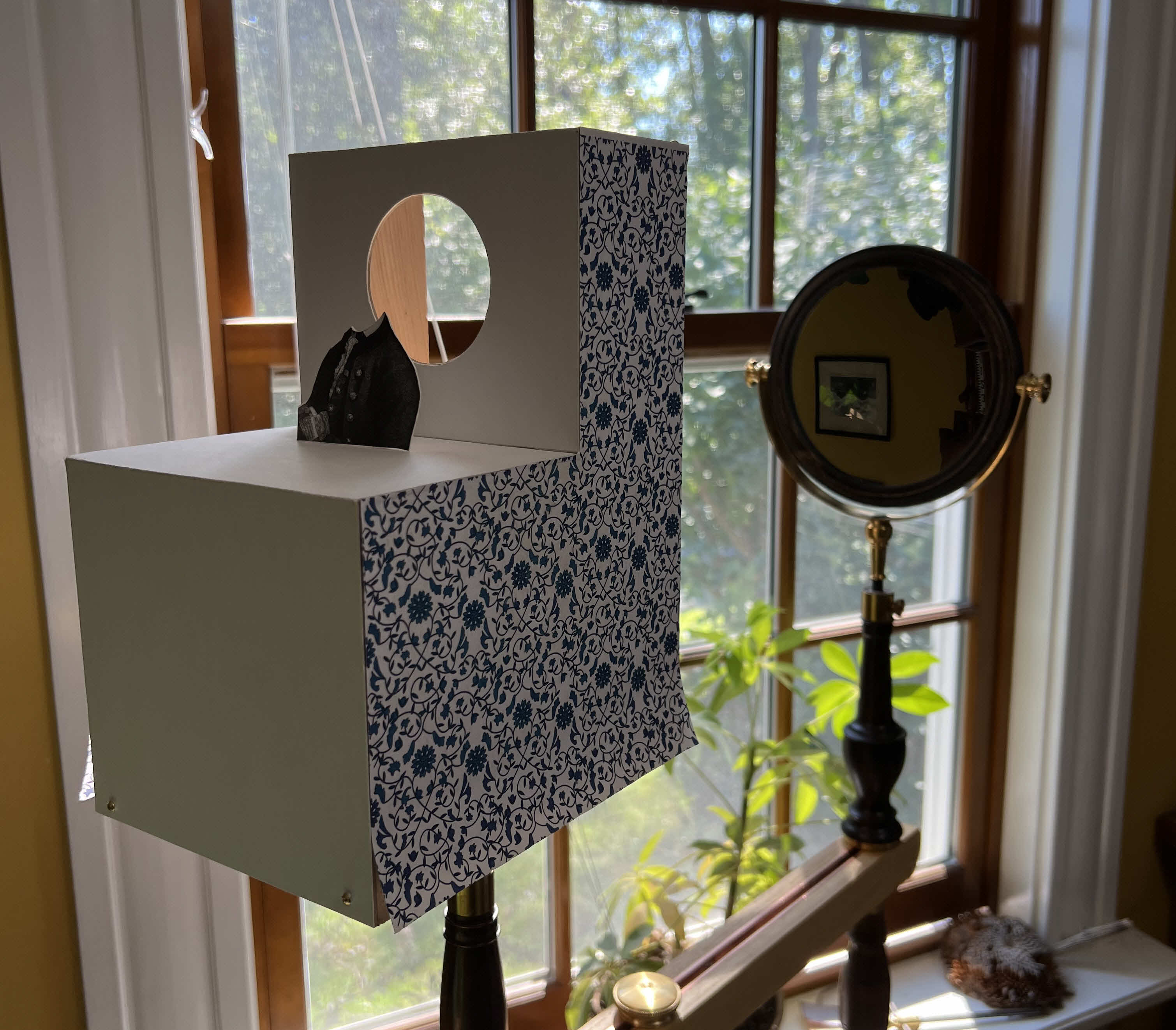
This optical box produces a striking illusion of the philosopher Immanuel Kant's head hovering in space upon his shoulders (on the little cardboard stand in front of the circular opening). Kant (1724-1804) used this illusion as a metaphor for how the viewing-box of the mind gives sense-impressions spatial form and projects them outward, constructing for us a perceptual world.
The effect relies on both eyes and the way that binocular convergence locates objects in space, so is difficult to reproduce here. The following link will give you a better idea of how this device is used.
Kant must have seen one of these devices, perhaps displayed by an itinerant showman. None have survived, so I have free reign to decide what it should look like. The decorative paper covering was a feature of travelling show-boxes of the 18th century.
Exhibitions:
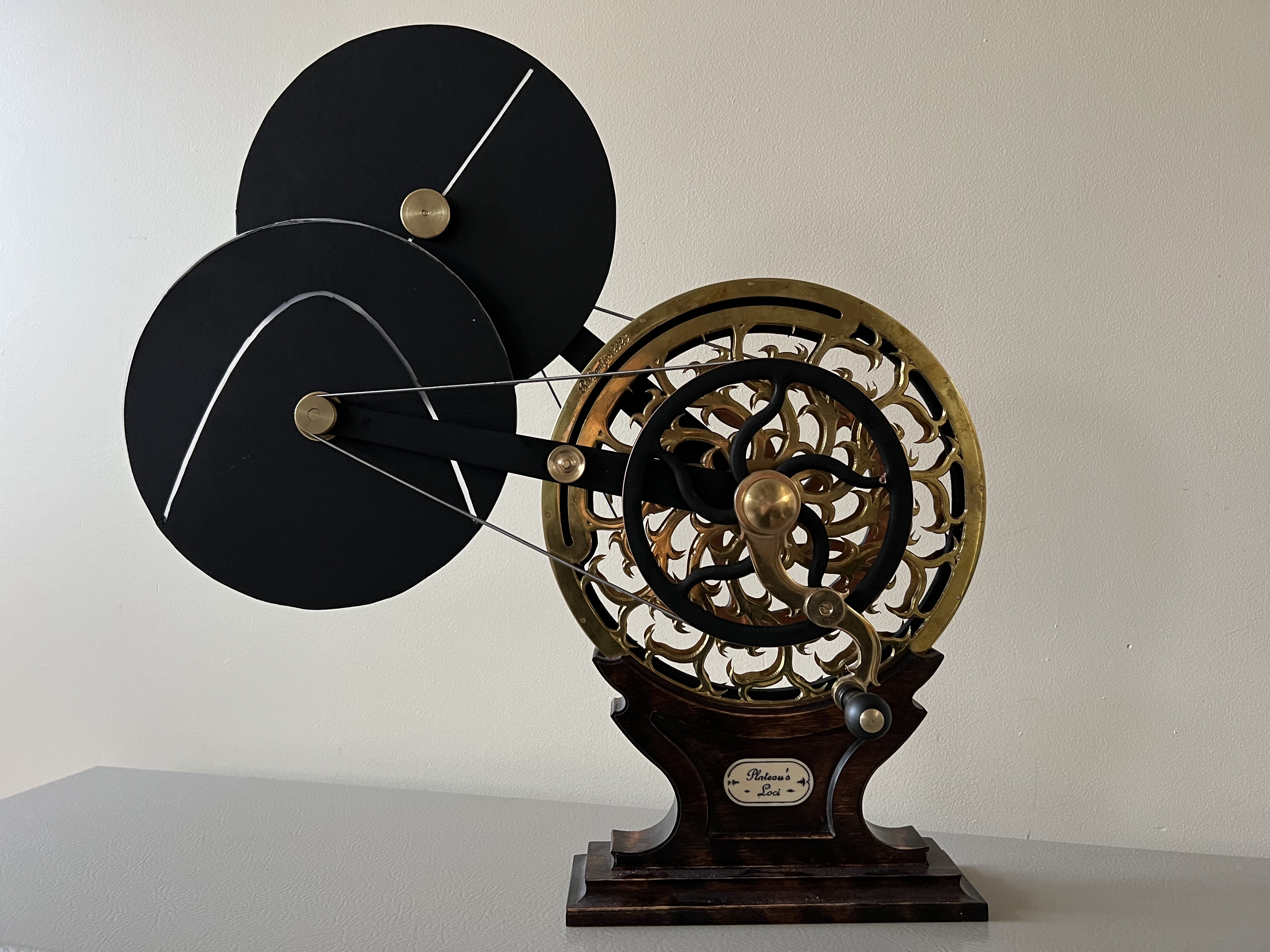
This is the first of a series of devices that led to the invention of cinema. The scientist Joseph Plateau designed it to track the intersection of two rotating figures (translucent lines on the black disks). The hand-crank turns these disks in opposite directions, one twice the speed of the other. You place a light behind the disks and at the right speed can observe a unique light-path. The disks can be positioned to fully or partially overlap.
It is impossible to post a video of the figures that it describes in light because the flicker-rate of the video camera creates its own light patterns not visible when you are physically present with the machine. There is no digital substitute.
I designed the brass mandella that supports the main pulleys on the inspiration of Arabic astrolabes. The inscription is engraved in "Nova Scotia ivory" (i.e. moose antler). The wood is Nova Scotia yellow birch. The large pulleys are copper with black enamel.
Exhibitions:

This is the second of a series of devices that led to the invention of cinema. The scientist Michael Faraday was inspired by the "spectral objects" that he had seen in early factories where overlapping spoked and cogged wheels rotated in relation to one another. He has abstracted the cog form and created a mechanism to move them at will.
The brass disk is spun like a top. It has a sandpaper base which provides the friction to drive two wooden wheels in opposite directions. They can be moved along their wooden shafts to infinitely vary their relative speeds. Faraday created many variations of this sort of machine and the different spectral objects that they produced gave him great delight.
Like Faraday, I made the disks out of cardboard. The rest of the device is made of copper, brass, moose antler, Nova Scotia yellow birch and locally-harvested apple-wood finished in tung oil and carnauba wax.
Exhibitions:
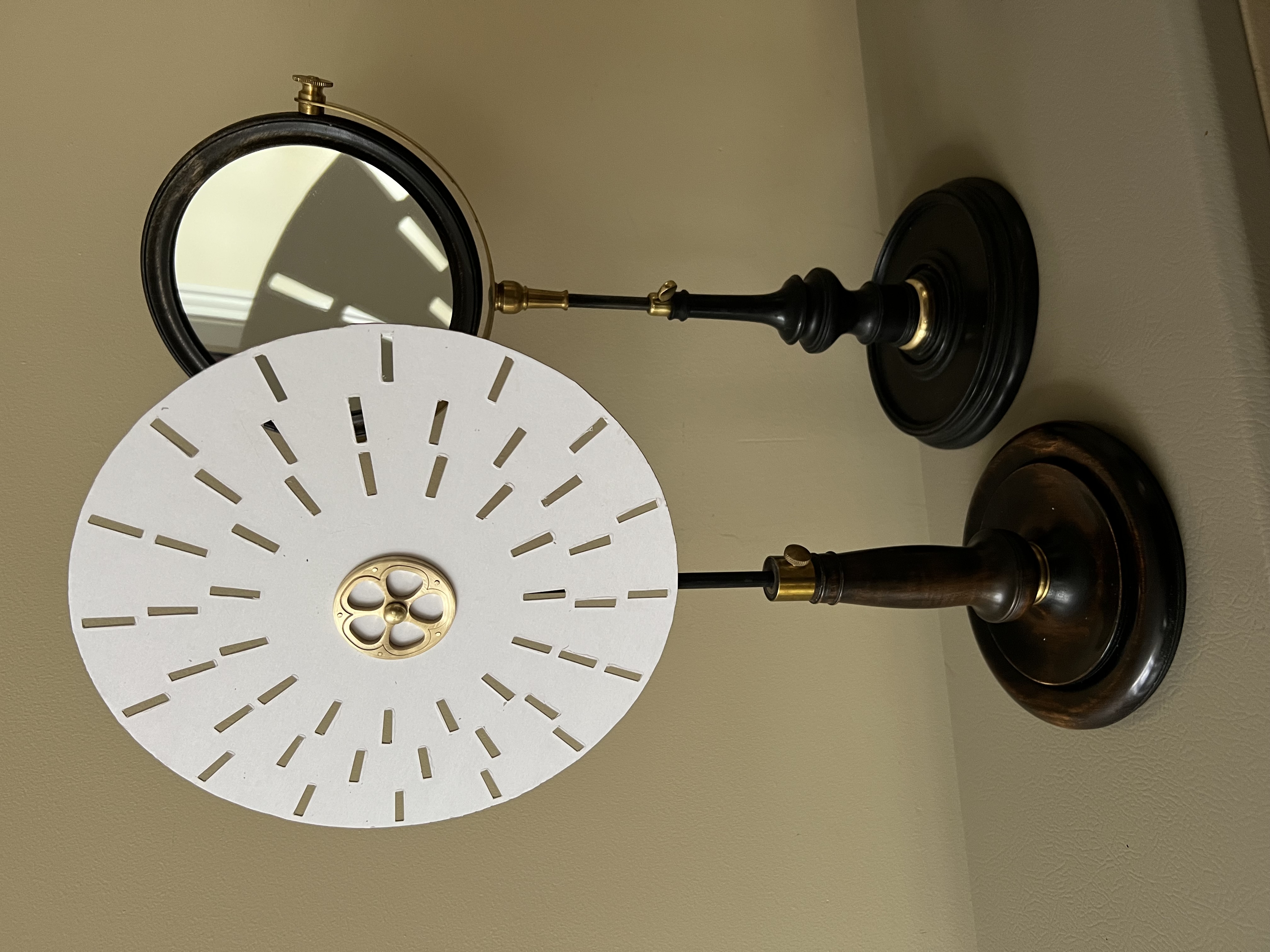
This is a very simple device, but probably the most important one in the "conversation" between Plateau and Faraday. The viewer looks through one band of slots as it rotates past her eye and observes the reflection of all three bands of slots in the mirror. The band she looks through appears stationary (an illusory "spectral object"), but the other two rotate in either a clockwise or counterclockwise direction (spectral motion). You can change and control these motions by changing which of the three bands you look through.
Scientists at the time expected their more serious colleagues to reconstruct their apparatuses to see what they revealed. When Plateau built his own version of Faraday's perforated wheel, he substituted images on the reverse side for one of the bands of slots. The distinction between a shutter disk (the slots) and an image disk (on the reverse side) plus the idea of controllable motion in an image led Plateau to the next invention which was the phenakistiscope.
Apparently no-one has built one of these since the 1830s, but it is an important material link in the thinking of these two scientists.
Exhibitions:
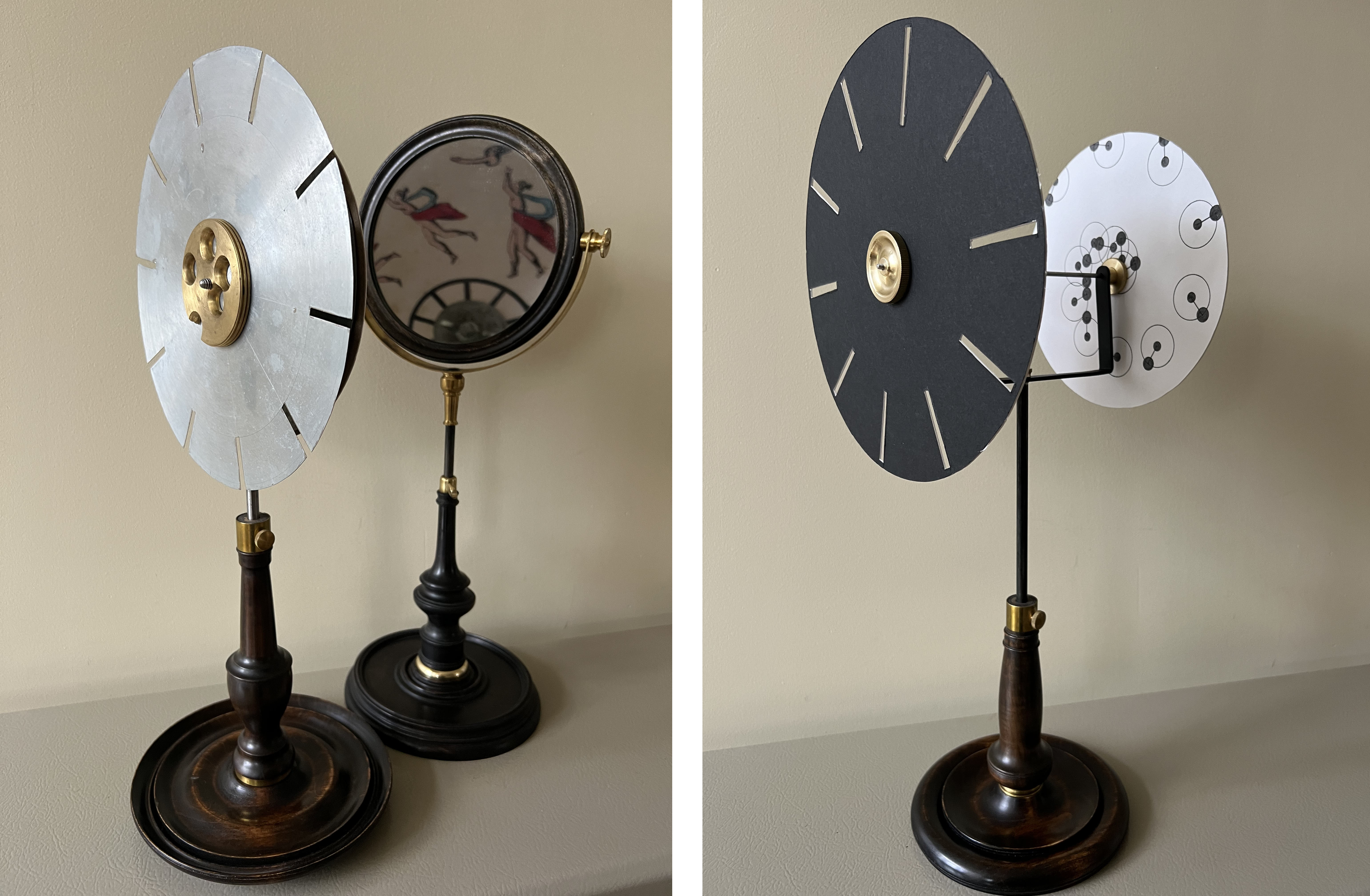
In the paper in which Plateau describes his version of Faraday's perforated wheel, he also describes the very first animation device that is later called a phenakistiscope. The outer band of perforations had 16 openings and his first disk had 16 images (of a pirouetting dancer) in a loop. In later designs like figure 10, the image disk faces the shutter disk so that no mirror is necessary. Commercial phenakistiscopes used 10 slots and 10 images as I have done here.
My first attempt (figure 9) had a steel shutter disk and a brass hub with different indents so that it could be spun by your finger at different speeds. The other (figure 10) is based on a commercial design where you roll the axle between thumb and forefinger.
Internationally-renowned graphic designer Marian Bantjes made a very inventive disk for my mirror phenakistiscope which you can see in action in this video.
Exhibitions:
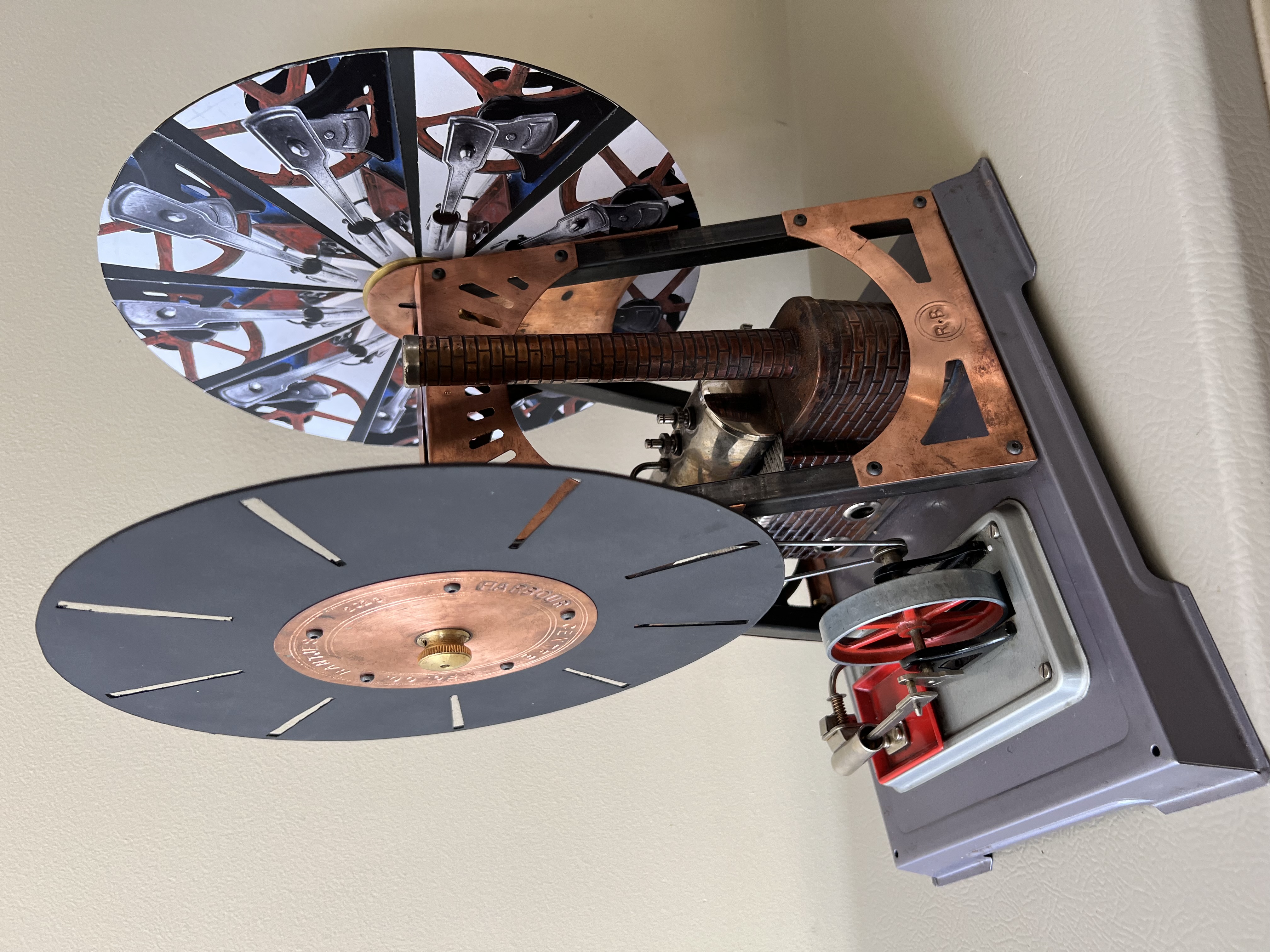
The first images that people made for the phenakistiscope were of machines, or people working or having sex in machine-like ways. I felt that when this image-making machine looked at us it saw only itself. I am playing with that idea in this version of it. The factories that first fascinated Faraday with their phantom images were driven by stationary steam engines. When Plateau teamed up with Charles Duboscq to create a 3D phenakistsisope they chose to animate a stationary steam engine. So that was my inspiration.
Here I have created a steam engine that drives a reflexive loop animation of its own in-and-out action as it drives an image of itself ....etc. ad infinitum.
This is one of the few cases where I did not make everything from scratch. The engine itself is a toy identical to one that I played with as a boy. I built the phenakistiscope structure out of blued steel, copper with some brass details and cardboard disks. The images are hand-tinted photographic laser-prints.
I sound a bit excited in this video of an early trial. That is because I had got the pulley size and consequent speed right by pure guess. Dark bands move across the image but are created by the strobe rate of the video camera. You don't see them when you interact directly with the machine.
Exhibitions:
[1] Rod Bantjes: see https://people.stfx.ca/rbantjes/.